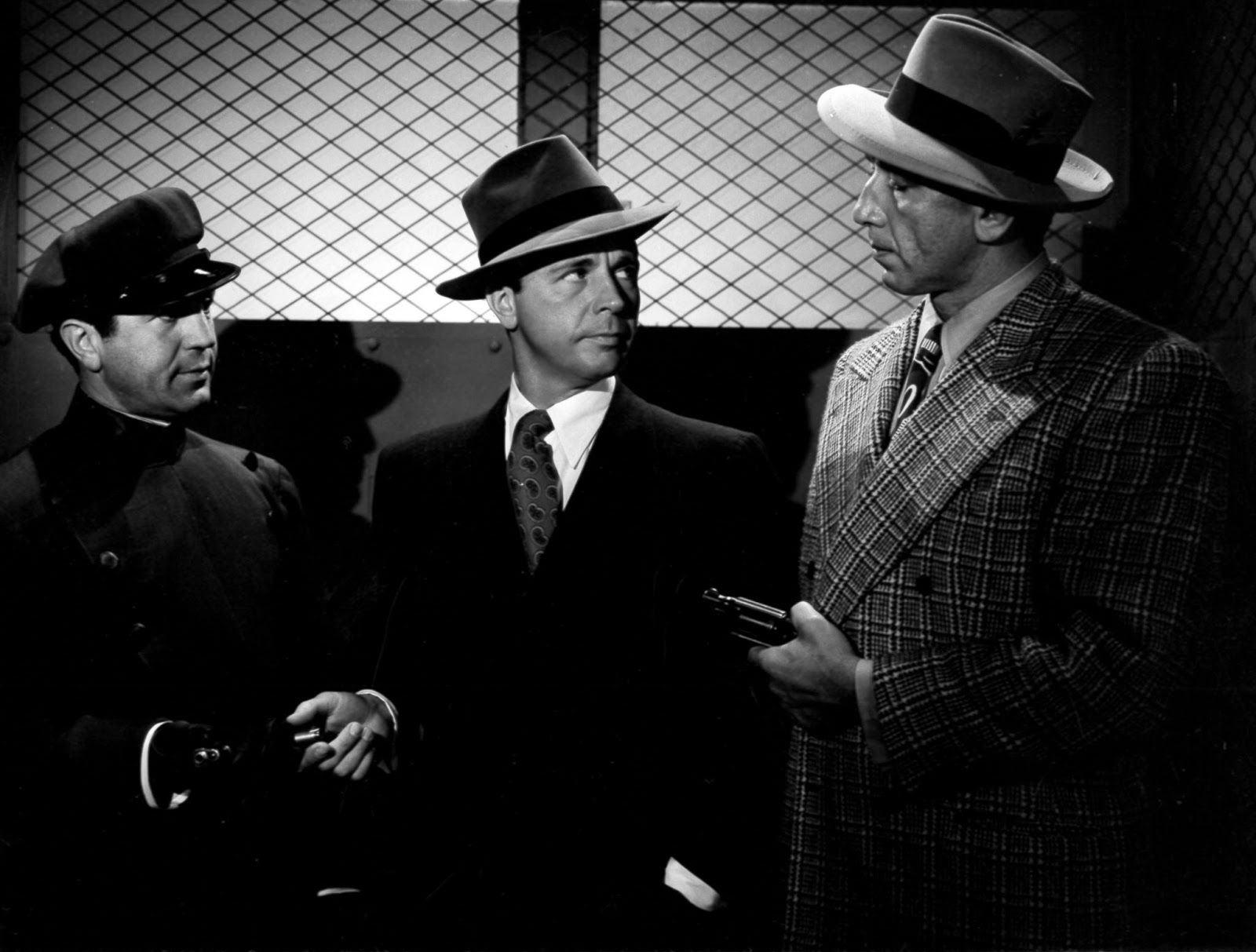“This case has more angles than a six-pointed star…”
Posted by Ivan G. Shreve, Jr. on Jun 24th 2016
As the 1944-45 season of radio’s The Fitch Bandwagon came to its conclusion, star Dick Powell made an unusual request of the sponsor, shampoo magnate F.W. Fitch. Powell asked Fitch if he could take over as Bandwagon’s summer replacement, with a private eye series that would be scripted by Ray Buffum and directed by Dee Englebach. Fitch didn’t hesitate: most big-name radio stars took summer vacations at that time, so getting someone of Powell’s celebrity wattage would most assuredly not hurt any sales of Fitch shampoo. The show would be titled Bandwagon Mysteries…but most old-time radio fans refer to it by its later title, Rogue’s Gallery. It premiered over NBC on this date in 1945.
In the 1930s, Dick Powell had established himself as a motion picture favorite in a slew of musicals released by Warner Brothers. In titles such as 42nd Street (1933), Footlight Parade (1933), and Gold Diggers of 1933 the youthful Powell sang and danced as the chorus boy-next-door …but it didn’t take long for the actor-crooner to become weary of the rut the studio had placed him—his complaints to studio executives about having to appear in movies with “the same stupid story” fell on deaf ears. Powell left Warner’s in 1940 and found work at Paramount…where they cast him in Warner-like fare such as Star Spangled Rhythm (1942) and Happy Go Lucky (1943). Dick realized he was just too old to play boyish romantic leads anymore.
When Powell got word of Billy Wilder’s Double Indemnity project, he lobbied Paramount hard to play the leading role of insurance man Walter Neff. Dick gambled that playing such a part would turn his career around overnight. He was right on that score; Indemnity generated critical dividends for the actor who eventually did play Neff: Fred MacMurray (also an actor known for romantic leads in light comedies). Dick Powell’s persistence would pay off, however, when he became the first actor to play Raymond Chandler’s hard-boiled sleuth Phillip Marlowe in the R-K-O production of Murder, My Sweet (1944—the silver screen adaptation of Chandler’s Farewell, My Lovely).

With his rejuvenated career as a movie tough guy, Powell took advantage by starring in such films noir as Cornered (1945) and Johnny O’Clock (1947). He also reprised his Marlowe role to much acclaim on The Lux Radio Theatre’s adaptation of “Murder, My Sweet” on June 11, 1945. Two weeks later, he began emoting before the microphone as shamus Richard Rogue.
Rogue’s Gallery wasn’t a particularly remarkable series…but it did get points for trying something different. What listeners remember most about the show is that when Rogue was on the receiving end of a blackjack (and let’s be honest—it happened to gumshoes a lot) or knockout drops, he would ascend to what he called “Cloud Number Eight” in his subconscious. There he would encounter his alter ego, “Eugor” (“Rogue” spelled backwards), played by radio veteran Peter Leeds. Described by the detective as “a nasty little spook,” Eugor would occasionally be of help to Rogue by pointing out some clue or other bit of business that Rogue might have otherwise overlooked in his conscious state. In addition to “Eugor,” Leeds played straight roles on Gallery as well. Rounding out the program’s regular cast were Lurene Tuttle as Betty Callahan and Ted von Eltz as Lt. Urban, Rogue’s contact on the force.
The summer run of Rogue’s Gallery was a pleasant success—so much so that Powell relinquished his duties as host of The Fitch Bandwagon (singer-comedienne Cass Daley inherited the gig in the 1945-46 season) to continue playing Rogue on a weekly basis when Gallery moved to Mutual in the fall of 1945. It returned to NBC for another summer season before Powell called it quits. It’s interesting to note that the actor’s stint on Gallery was essentially a blueprint for Dick’s later Richard Diamond, Private Detective program; many of the elements on Diamond originated on Gallery—the light-heated insouciance of the main character; an occasional song crooned by Powell, etc.
Powell might have been finished with Rogue’s Gallery…but the show did continue without him. In the summer of 1947, the show resurfaced again as the replacement for Fitch Bandwagon, this time with Barry Sullivan as Rogue. In November of 1950, Gallery eked out one last season (with both Chester “Boston Blackie” Morris and Paul Stewart as the titular private eye) on ABC before departing the airwaves for good on November 21, 1951.

Of the less-than-two-dozen episodes of Rogue’s Gallery that are in circulation, only two of them are non-Powell episodes (one with Barry Sullivan and the other with Paul Stewart). The Sullivan episode, “Phyllis Adrian is Missing” (06/29/47) will be available in our upcoming Gallery collection, Blue Eyes (the remaining fifteen broadcasts star Dick Powell). Keep an eye peeled for it, because if you’ve been on the hunt for a decidedly different approach to crime drama…Rogue’s Gallery will definitely be your bottle of bourbon (stashed in the desk drawer, of course).

